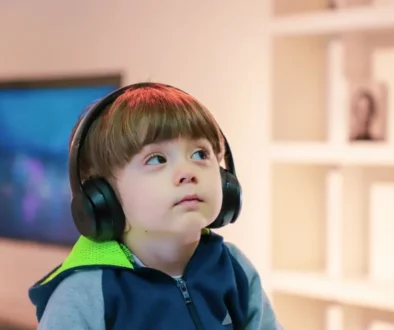Diagnosing Autism With the Autism Diagnostic Observation Schedule Test
According to the Centers for Disease Control and Prevention, almost 1 out of 44 children is diagnosed with an autism spectrum disorder in the United States.
While there is still much research to complete regarding the complexities of this neurodevelopmental disorder, it can be said that early assessment and intervention play a key role in supporting healthy future development. One way in which clinicians are able to assess and diagnose autism is through a structured tool known as the Autism Diagnostic Observation Schedule. Also known as “ADOS”.
In this article, we’ll go over some details on what this diagnostic tool entails and what you can expect an evaluation to look like. But first…
What is Autism?
Autism Spectrum Disorder (or simply autism) can be characterized as a developmental condition. The conditions that appear impact everything from social skills to emotional regulation to verbal communication.
You may have heard autism referred to as a “spectrum condition”. This alludes to the fact that autism affects each person differently. The complex traits present in someone with autism affect daily functioning to varying degrees. Depending on the severity, certain symptoms of autism might go unnoticed until later in a child’s development.
Signs of Autism
There are some common signs you can look out for prior to taking your child in for an ADOS evaluation. Autism symptoms typically appear early in a child’s development, with some infants presenting signs and symptoms as early as the first few months. Certain other behaviors may start to show later at 2 or 3 years old.
A few signs that your child may exhibit starting at 6 months:
- Limited or nonexistent eye contact
- Smiles and facial expressions are not shared
- Limited responses to hearing their name
- Language development seems delayed
- Frequent or excessive arrangement of toys into lines
- Repetitive physical movements such as rocking or twirling
- Intense reactions to external stimuli such as bright lights or textures
It should be of note that every child is different, and not all children will show all signs. However, learning these signs early can be an important step in a child’s development journey.
Autism Diagnosis
Due to the complex nature of autism, it is crucial to enlist the help of a clinician for a professional evaluation. An autism diagnosis can be based on present signs, symptoms, and clinical testing. The assessment that evaluates a child’s skills and interactions is the Autism Diagnostic Observation Schedule (ADOS).
The evaluation provides a valuable way in which the process of diagnosis is easier. Let’s take a closer look.
Autism Diagnostic Observation Schedule
The ADOS is an activity-based assessment that evaluates common characteristics commonly associated with autism. Lab or medical testing does not exist as a means to diagnose autism. Because of this, tests like the ADOS focus on behavior-based testing in order to observe and evaluate.
The test itself is built to accommodate all ages of differing abilities and takes a couple of hours to complete. During the test itself the following areas get observed:
- Language
- Functional communication
- Social awareness
- Social interaction
- Repetitive behaviors
- Restricted interests
- Imaginative object use
- Creativity
The evaluation serves as a way to confirm what autism symptoms are present if any. In addition, if symptoms are present, it confirms how many and how much of an impact said symptoms will have on the individual in question.
Modules
There are four different modules that make up the ADOS. They are designed to administer appropriate testing according to an individual’s age as well as functional abilities.
The first module uses non-verbal testing scores as it is designed for those with inconsistent verbal communication skills. Scenarios used during testing are entirely non-verbal. Module two is made up of scenarios designed for those with minimum communication skills and uses testing scenarios that require movement and object interactions.
The third module is designed for those with fluent verbal communication skills. This module gets conducted sat at a desk or a table. The final fourth module is designed for verbally fluent individuals who are beyond the younger age of playing with toys. Some of the third module testing elements may get used but are typically geared more toward experiences with daily living.
Throughout each of these tests, the administrator or examiner will walk the individual through standardized scenarios in order to confirm reactions and responses.
Because each module is oriented for different behavioral levels and cognitive abilities, not all modules get utilized during testing. If an initial module selection doesn’t match the abilities of the individual in question, another module testing scenario may get utilized in order to obtain a more accurate score.
Scoring
As mentioned above, there are various areas in which the individual is observed such as language ability and creativity. The diagnostic scores for this test measure impairment in these areas. The five specific domains that scores get calculated from include:
- Communication
- Reciprocal social interaction
- Communication and social
- Imagination
- Stereotyped behaviors
For example, if a child scores a 5 in the communication domain, that would show they fall on the autism spectrum. For the reciprocal social interaction domain, a score of 6 is the minimum for autism. It should be noted, however, that the test is just one element and may not be the only sufficient source for an autism diagnosis. Clinicians will also take into account developmental history and observations made outside of ADOS testing.
More Information
Early behavioral intervention has shown to improve crucial learning and social skills for kids who fall on the autism spectrum. Early treatment can provide your child with dramatically different developmental outcomes. The Autism Diagnostic Observation Schedule is but one way in which your family can receive an understanding of the challenges and strengths of your child.
A comprehensive evaluation can make all the difference when it comes to future treatment and development. Do you have suspicions that your child may be exhibiting behaviors associated with autism? Developmental Pediatrics has offered assessment and testing services since 2000.
Don’t hesitate to contact us or schedule a visit! We’re here to help your child thrive.



